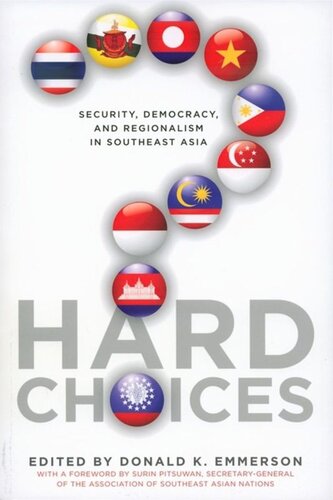

Most ebook files are in PDF format, so you can easily read them using various software such as Foxit Reader or directly on the Google Chrome browser.
Some ebook files are released by publishers in other formats such as .awz, .mobi, .epub, .fb2, etc. You may need to install specific software to read these formats on mobile/PC, such as Calibre.
Please read the tutorial at this link: https://ebookbell.com/faq
We offer FREE conversion to the popular formats you request; however, this may take some time. Therefore, right after payment, please email us, and we will try to provide the service as quickly as possible.
For some exceptional file formats or broken links (if any), please refrain from opening any disputes. Instead, email us first, and we will try to assist within a maximum of 6 hours.
EbookBell Team

4.0
46 reviewsThe region’s most powerful organization, ASEAN, is being challenged to ensure security and encourage democracy while simultaneously reinventing itself as a model of Asian regionalism. Should ASEAN’s leaders defend a member country’s citizens against state predation for the sake of justice - and risk splitting ASEAN itself? Or should regional leaders privilege state security over human security for the sake of order - and risk being known as a dictators’ club? Should ASEAN isolate or tolerate the junta in Myanmar? Is democracy a requisite to security, or is it the other way around? How can democratization become a regional project without fi rst transforming the Association into a "peoplecentered" organization? But how can ASEAN reinvent itself along such lines if its member states are not already democratic? How will its new Charter affect ASEAN’s ability to make these hard choices? How is regionalism being challenged by transnational crime, infectious disease, and other border-jumping threats to human security in Southeast Asia? Why have regional leaders failed to stop the perennial regional "haze" from brush fi res in democratic Indonesia? Does democracy help or hinder nuclear energy security in the region? In this timely book - the second of a three-book series focused on Asian regionalism - ten analysts from six countries address these and other pressing questions that Southeast Asia faces in the twenty-first century.